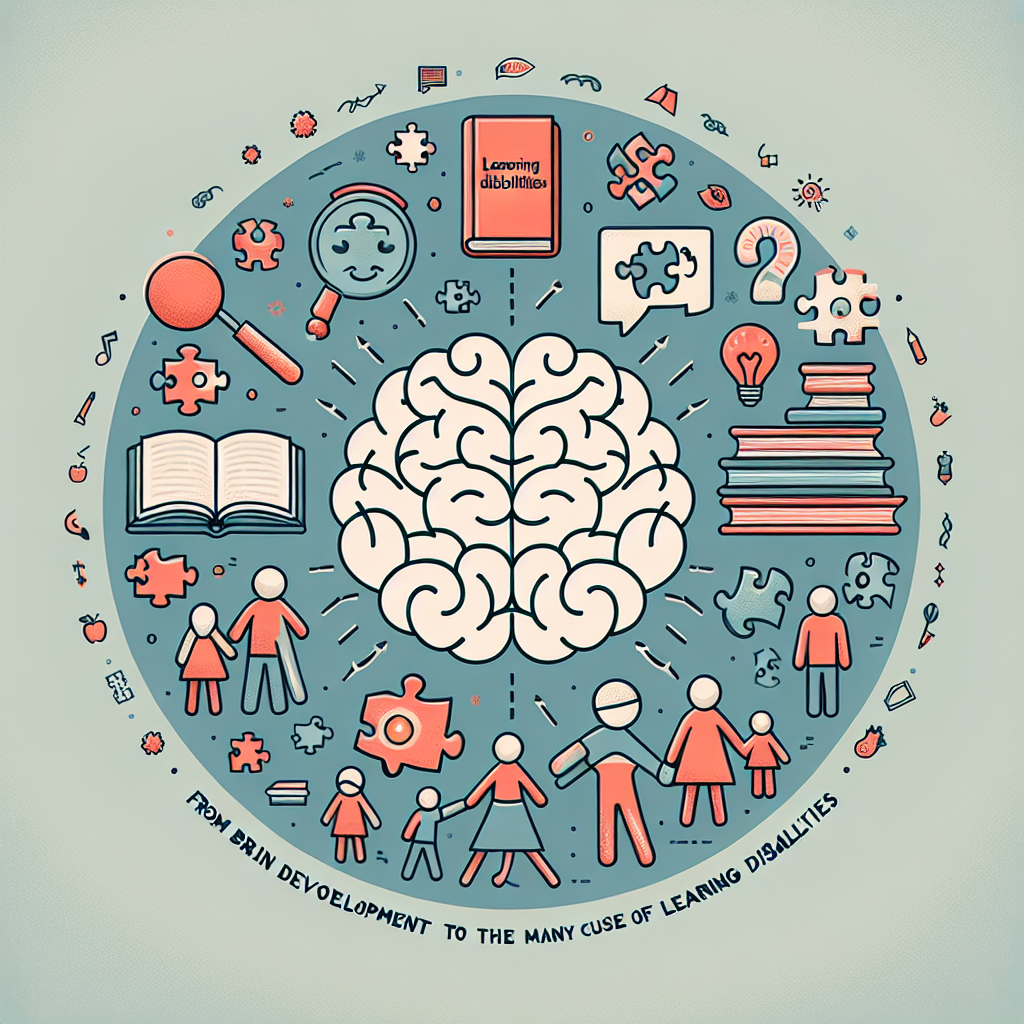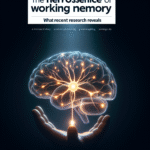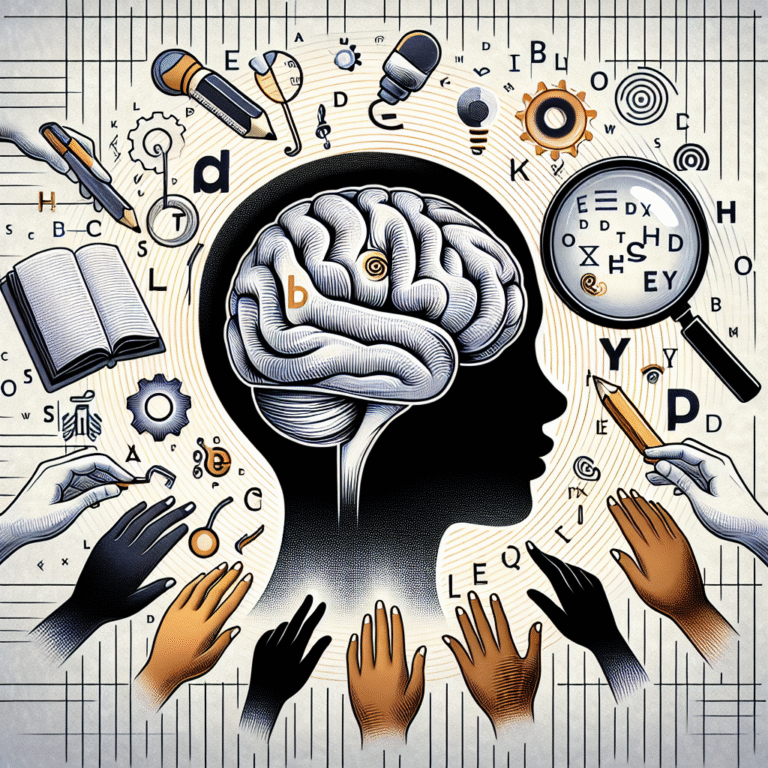
From Brain Development to Family Influence: The Many Causes of Learning Disabilities
Introduction
Imagine a bright, curious child full of potential but struggling to keep up in the classroom. This child may experience frustration, anxiety, and a diminishing belief in their abilities. What lies behind such a disparity in learning? The complex tapestry of learning disabilities is woven from various threads, including brain development, genetics, and family influences. From Brain Development to Family Influence: The Many Causes of Learning Disabilities explores these intricacies and aims to enlighten parents, educators, and the community about how we can better support children who face these challenges.
Understanding learning disabilities isn’t merely an academic pursuit; it’s a vital step toward creating inclusive environments where every child can thrive. Whether you’re a parent, teacher, or simply an interested reader, this article aims to provide valuable insights backed by research and real-world experiences.
The Biological Foundations: Brain Development
The Brain’s Role in Learning
Learning disabilities often originate from the very structure and functionality of the brain. At its core, the brain is a remarkable organ that undergoes significant changes from birth through adolescence. These changes are dictated by both genetics and environmental factors. Understanding From Brain Development to Family Influence: The Many Causes of Learning Disabilities requires recognizing how brain development can impede or enhance learning.
Critical Periods in Brain Development
During early childhood, particular periods are crucial for developing various cognitive skills. For instance, the formative years are marked by crucial neural development. If a child experiences adverse environmental factors such as toxicity or nutrition deficiencies during these periods, delays in cognitive development can occur.
| Development Stage | Key Neurodevelopmental Changes | Potential Learning Impacts |
|---|---|---|
| Infancy (0-2 years) | Rapid synapse formation | Delayed speech/language development |
| Early Childhood (2-5 years) | Increased myelination | Difficulties with fine and gross motor skills |
| School Age (6-12 years) | Higher-order cognitive functions development | Problems with reading, writing, and math |
Case Study: The Impact of Early Nutrition
A study conducted at the University of Michigan revealed that children who were malnourished in their early years displayed marked delays in cognitive skills compared to their well-nourished peers. This aligns with our understanding of how critical periods in brain development influence learning capabilities.
Analysis: This case study reinforces the importance of proper nutrition during early brain development and suggests that interventions targeting nutrition could potentially mitigate learning disabilities.
Genetic Predispositions: The Inherited Component
Genetic Factors in Learning Disabilities
While brain development is crucial, genetics also plays a significant role in learning disabilities. Research indicates that conditions such as dyslexia, ADHD, and other learning disabilities can run in families, showcasing the genetic component involved.
The Role of Twin Studies in Understanding Genetics
Twin studies provide compelling evidence for the hereditary factors in learning disabilities. When identical twins are studied, they often show a higher concordance rate for learning disabilities compared to non-identical twins. This supports the notion that genetics greatly influences the likelihood of developing these conditions.
| Genetic Inheritance | Implications for Learning Disabilities |
|---|---|
| High heritability | Increased likelihood of learning disabilities across family members |
| Low heritability | Potential environmental or situational causes dominate |
Case Study: The Family of Learning Disabilities
In a longitudinal study of children in families affected by dyslexia, researchers discovered that about 40% of children in those families exhibited similar challenges. This statistic emphasizes the link between genetics and learning disabilities.
Analysis: This case study highlights the critical role of inherited traits and encourages early screening and interventions in families with a history of learning disabilities.
Environmental Factors: Family and Surroundings
The Influence of Family Dynamics
A child’s learning ability is significantly impacted by their home environment. The family unit plays a crucial role, as emotional support, cognitive stimulation, and exposure to educational resources can either mitigate or exacerbate learning difficulties.
Parental Involvement and Its Effects
Research has shown that children whose parents engage in their education tend to perform better in school. Parental involvement ranges from helping with homework to engaging in literacy activities at home.
| Type of Family Involvement | Positive Outcomes | Negative Impacts |
|---|---|---|
| High Involvement | Improved literacy, motivation | Little chance for independence or self-learning |
| Low Involvement | Potential delays in learning | Struggles with self-esteem and lack of support |
Case Study: A Family’s Commitment to Change
In a Philadelphia study, a family decided to adopt a more hands-on approach after their child was diagnosed with ADHD. By implementing structured schedules, minimizing distractions, and being actively involved at school, the child exhibited significant improvements in academic performance.
Analysis: This case emphasizes the importance of active parental involvement and how a supportive home environment can lead to positive outcomes for children with learning disabilities.
Socioeconomic Factors: A Wider Lens
Understanding Socioeconomic Status (SES)
A child’s socioeconomic background can influence learning disabilities profoundly. Children from low-income families often lack access to educational resources, specialized instruction, and supportive interventions.
The Achievement Gap
The achievement gap often correlates with SES, where children from lower socioeconomic backgrounds face increased barriers. Inadequate access to healthcare, education, and safe living conditions can contribute to the prevalence of learning disabilities in these populations.
| Socioeconomic Status | Educational Access | Learning Disability Rates |
|---|---|---|
| Low | Limited resources | Higher prevalence |
| Middle/High | Abundant resources | Lower prevalence |
Case Study: Low-Income Neighborhoods and Education
Research conducted from Stanford University found that children from low-income neighborhoods had lower literacy rates compared to those from affluent communities, even when controlling for ability. Educational access serves as a pivotal point in understanding From Brain Development to Family Influence: The Many Causes of Learning Disabilities.
Analysis: This underscores the urgent need for equitable educational resources and interventions in underprivileged areas, shining a light on socioeconomic factors contributing to learning disabilities.
Overcoming Barriers: Strategies for Support
Creating Inclusive Learning Environments
Understanding the complex causes of learning disabilities is the first step toward creating effective support systems. An inclusive learning environment promotes acceptance and resource accessibility.
Individualized Education Programs (IEPs)
For students diagnosed with learning disabilities, IEPs can be vital in outlining specific goals and accommodations tailored to the individual’s needs. Schools must work collaboratively with families to develop effective plans.
| Key Elements of IEPs | Benefits |
|---|---|
| Specific learning goals | Tailored approaches to learning |
| Regular progress monitoring | Accountability and assessment |
| Parental involvement | Consistent support |
Early Intervention: A Proactive Approach
Early identification and intervention can significantly change the trajectory of a child with learning disabilities. Screening tools and regular assessments should be implemented in schools to ensure that no child falls through the cracks.
Case Study: Early Intervention Success
A study in Miami showcased that children who received early interventions for reading difficulties showed a notable increase in literacy skills compared to peers who did not receive any support.
Analysis: This case supports the notion that early intervention is a critical factor in addressing the multitude of causes encompassed within From Brain Development to Family Influence: The Many Causes of Learning Disabilities.
Conclusion
Understanding the complexities surrounding learning disabilities illuminates the diverse contributors to these challenges—from biological and genetic predispositions to familial and societal influences. The insights gained From Brain Development to Family Influence: The Many Causes of Learning Disabilities underscore the importance of a collaborative approach involving educators, families, and healthcare professionals.
As we strive to support children who face learning disabilities, let us recognize that every effort counts. Whether it’s through parental involvement, educational intervention, or societal change, we can create a landscape where every child has the opportunity to thrive. Together, we have the power to transform lives!
FAQs
1. What are learning disabilities?
Learning disabilities are neurological disorders that affect the brain’s ability to receive, process, or respond to information. This can lead to difficulties in areas such as reading, writing, math, and social skills.
2. Are learning disabilities genetic?
Yes, research indicates a genetic component to learning disabilities, meaning they can run in families. Genetic factors combined with environmental influences contribute to their development.
3. How can I support my child if they have a learning disability?
Engage in your child’s education by providing support at home, advocating for needed resources in school, and creating a structured and encouraging environment conducive to learning.
4. What interventions are available for children with learning disabilities?
Interventions such as Individualized Education Programs (IEPs), specialized tutoring, and accommodations in school can help support children with learning disabilities.
5. Can learning disabilities be outgrown?
While some children do show improvement over time, many will continue to experience challenges throughout their academic journey. Early intervention tends to yield better long-term outcomes.
6. What role does school play in addressing learning disabilities?
Schools should implement awareness programs, provide appropriate staffing, create supportive environments, and ensure access to resources that can assist children with learning disabilities.
By exploring From Brain Development to Family Influence: The Many Causes of Learning Disabilities, we pave the way for a more supportive future for all children facing these challenges.
















